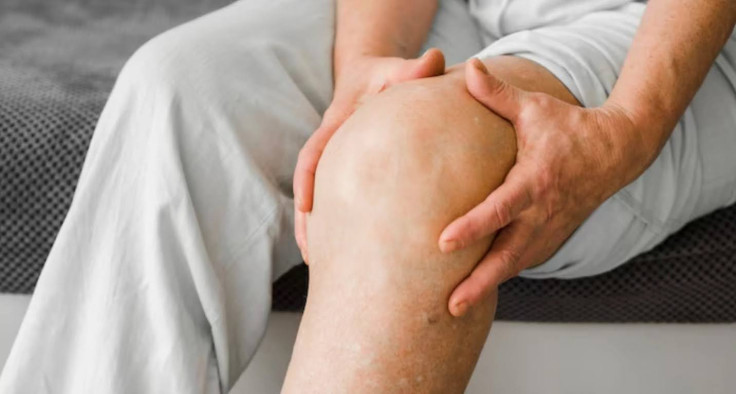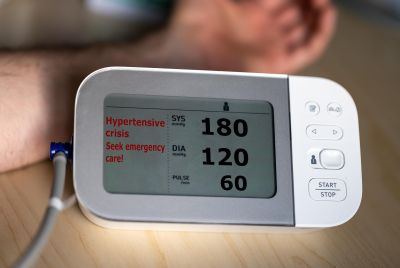How Medical Marijuana Helps With Leg Injuries
Why more patients are turning to THC gummies for faster recovery, better sleep, and natural pain relief after leg injuries

Leg injuries can be life-altering. Whether caused by sports, accidents, surgery, or chronic medical conditions, they often result in pain, swelling, stiffness, and loss of mobility. Recovery can take weeks or even months, and during that time, patients frequently struggle with physical discomfort, emotional stress, and sleep disturbances. Traditional treatment methods, like over-the-counter anti-inflammatory medications, prescription opioids, physical therapy, or surgery, may provide temporary relief. Still, they often come with side effects and long-term health concerns.
In recent years, medical marijuana has emerged as a compelling alternative or complementary treatment for those coping with leg injuries. With a growing body of research supporting its therapeutic properties, cannabis is gaining recognition for its ability to relieve pain, reduce inflammation, promote sleep, and aid in overall recovery. Many patients are especially turning to convenient, discrete forms like THC gummies to experience these benefits without the harsh side effects of conventional pharmaceuticals.
Understanding how medical marijuana works requires a closer look at the body's internal systems, particularly the endocannabinoid system. This biological network regulates pain, inflammation, mood, appetite, and sleep. The cannabis plant contains more than 100 active compounds called cannabinoids, with THC (tetrahydrocannabinol) and CBD (cannabidiol) being the most well-known. THC, the psychoactive compound in marijuana, is responsible for the euphoric 'high' but also has potent analgesic and anti-inflammatory effects that are especially useful for injury recovery.
When someone suffers a leg injury, a torn ligament, fractured bone, strained muscle, or nerve damage, the body responds with inflammation and pain signalling. These responses are natural, but when prolonged or severe, they can hinder recovery and significantly affect quality of life. Medical marijuana, particularly THC, interacts with the body's CB1 and CB2 receptors to help modulate these responses. By binding to these receptors, THC can dampen pain perception and reduce inflammatory reactions in the affected area.
In practical terms, this means patients using medical marijuana may experience faster relief from acute symptoms like throbbing pain, muscle tightness, and swelling. For individuals who struggle to sleep due to pain or discomfort, THC's sedative properties can promote deeper, more restorative rest, which is critical for healing. Lack of quality sleep has been shown to delay tissue repair and increase pain sensitivity, so addressing sleep disturbances is a key component of a successful recovery strategy.
Beyond the physiological benefits, medical marijuana also helps with the emotional and mental challenges that accompany leg injuries. Extended recovery periods often lead to frustration, anxiety, and even depression, especially when mobility is limited. THC, when used in moderate doses, can elevate mood and reduce stress, making it easier for patients to stay positive and engaged in their rehabilitation process. This is one of the reasons why THC gummies have become so popular: they provide a consistent dose in a convenient and enjoyable format that supports both mental and physical well-being.
THC gummies are particularly effective for leg injury patients for several reasons. First, they are easy to dose. Each gummy contains a precise amount of THC, making it simple to track how much is being consumed. This is important for patients who are new to cannabis or are trying to find the optimal dose for their pain management. Unlike smoking or vaping, which can vary in effect depending on technique, gummies offer predictable, long-lasting relief that can be tailored to a patient's daily needs.
Another advantage is the method of ingestion. When THC is consumed as an edible, such as in a gummy, it passes through the digestive system and is metabolised by the liver before entering the bloodstream. This process produces a compound called 11-hydroxy-THC, which is more potent and has a longer duration of action than inhaled THC. For someone recovering from a leg injury, this extended relief is ideal. It means fewer doses are needed throughout the day and night, helping maintain steady symptom control and improving overall comfort.
Additionally, THC gummies are discreet and portable. This makes them an excellent option for patients attending physical therapy, returning to work, or participating in social activities while managing pain. Worrying about odour, equipment, or attracting attention is unnecessary. Patients can carry them in a bag and use them as needed without disrupting their routine or drawing unwanted scrutiny.
It's important to note that while THC can be highly beneficial, it should be used thoughtfully and under medical guidance, particularly for those new to cannabis or with a low tolerance. Overconsumption can lead to unwanted side effects such as dizziness, anxiety, or lethargy. Starting with a low dose and gradually increasing it under the supervision of a healthcare provider ensures safe and effective treatment. Some patients may also benefit from products that combine THC with CBD, as CBD can help balance the psychoactive effects of THC and contribute its own anti-inflammatory and calming properties.
As research continues, more evidence is emerging that medical marijuana can support various stages of injury recovery. From acute pain relief in the early days post-injury to long-term support for chronic pain or nerve damage, cannabis has a wide range of applications. Many orthopedic specialists, pain management doctors, and rehabilitation therapists are beginning to integrate cannabis education into their practices, recognising the value it offers as part of a holistic treatment plan.
Patients recovering from leg injuries often report that incorporating THC gummies into their regimen helps them reduce their reliance on opioids or NSAIDs. Given the growing concerns about opioid addiction and the long-term risks associated with anti-inflammatory drugs, having a natural, plant-based alternative is an appealing and often safer option. THC gummies, in particular, represent a user-friendly solution that aligns with modern preferences for clean, discreet, and precisely-dosed treatments.
For those exploring THC gummies for the first time, it's essential to choose reputable brands that offer third-party lab testing, clear labelling, and transparent sourcing. Not all products are created equal; quality can significantly impact safety and effectiveness. Look for gummies made with natural ingredients, free from harmful additives, and specifically formulated for therapeutic use. Many brands now offer gummies with different ratios of THC to CBD, as well as variations designed for daytime use, nighttime relaxation, or inflammation relief.
In conclusion, medical marijuana is proving to be a valuable tool for managing and recovering from leg injuries. Its ability to ease pain, reduce inflammation, improve sleep, and support emotional resilience makes it a comprehensive option for patients seeking relief and faster healing. Among the many forms available, THC gummies stand out as a particularly convenient and effective way to harness the benefits of cannabis during recovery. As more patients and healthcare providers embrace this natural approach, the future of injury treatment is becoming more holistic, patient-centred, and promising.
© Copyright IBTimes 2025. All rights reserved.





















